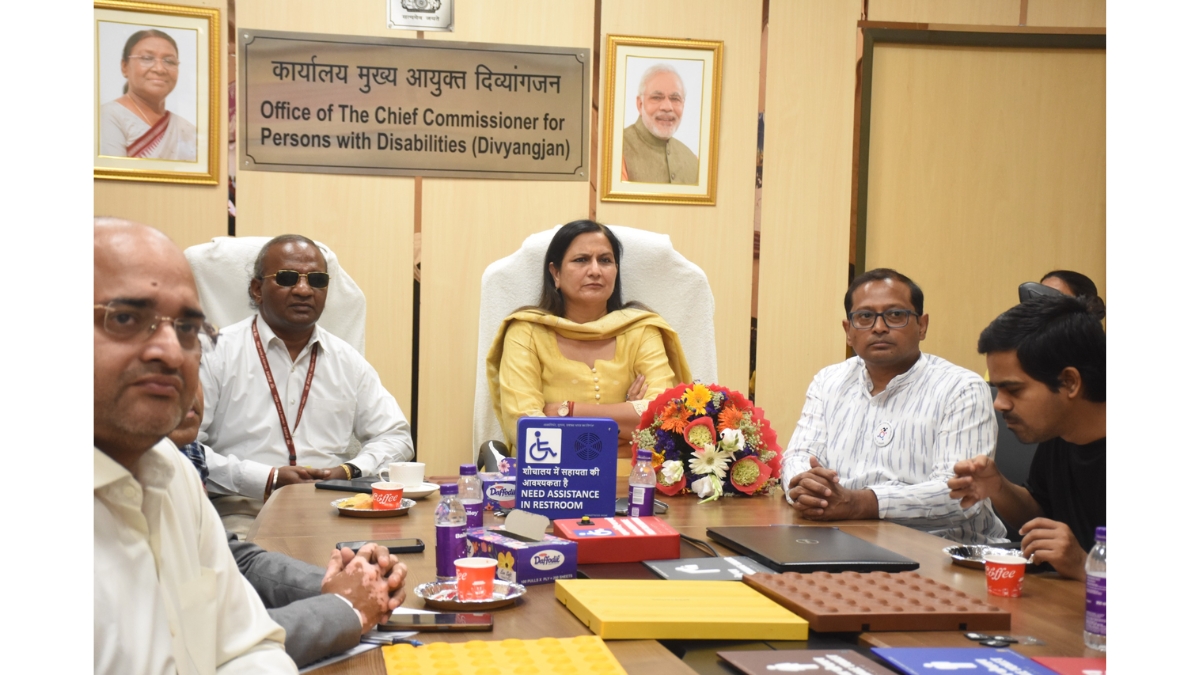Guru Arjan Dev death anniversary: All you need to know about martyrdom of fifth Sikh Guru | India News

Guru Arjan Dev, also known as Guru Arjan, was the fifth Sikh Guru and the first Sikh martyr. He was born on April 15, 1563, in Goindval, present-day Punjab, India. Guru Arjan is remembered for his significant contributions to Sikhism, including the compilation of the first edition of the Sikh scripture, Guru Granth Sahib, and the construction of the Harmandir Sahib, also known as the Golden Temple, in Amritsar.
Guru Arjan succeeded his father, Guru Ram Das, as the Guru of the Sikh community in 1581. He continued the work initiated by his predecessors and played a crucial role in organizing and expanding Sikhism. One of his notable achievements was the compilation of the Adi Granth, which later became the Guru Granth Sahib, the central religious scripture of Sikhism. He collected the writings of the first four Gurus and other selected compositions of various saints and included them in this sacred text.
Challenges faced by Guru Arjan Dev
Guru Arjan Dev faced numerous challenges and hardships during his lifetime. Some of the key challenges he encountered include:
Political Opposition: Guru Arjan Dev faced opposition from the Mughal authorities, particularly during the reign of Emperor Jahangir. The growing influence of Sikhism and the Guru’s popularity among the masses posed a perceived threat to the political stability of the Mughal Empire. This led to increased scrutiny and hostility towards the Guru.
Economic Pressures: Guru Arjan Dev faced economic pressures and confiscation of his property by the Mughal authorities. Emperor Jahangir imposed heavy fines and levies on the Guru, leading to financial strain on him and the Sikh community. These measures aimed to undermine the Guru’s influence and weaken the Sikh movement.
Religious Intolerance: Guru Arjan Dev’s martyrdom was primarily a result of religious intolerance. The Mughal Empire, under Jahangir’s rule, sought to suppress any religious expression that deviated from Islam. Guru Arjan Dev’s steadfast commitment to Sikhism and refusal to renounce his faith led to his execution.
Martyrdom
On May 30, 1606, Guru Arjan was martyred.
Guru Arjan Dev was martyred in 1606 under the orders of the Mughal Emperor Jahangir. The exact details of his execution vary in historical accounts, but the most commonly accepted version is as follows:
According to historical accounts, the Mughal emperor ordered Guru Arjan Dev’s arrest and subsequent torture. He was taken into custody and brought to Lahore, where he was subjected to severe torture. It is said that he was made to sit on a scorching hot iron plate while boiling hot sand was poured over his body. Despite the excruciating pain, Guru Arjan Dev remained calm and composed, uttering hymns from the Adi Granth.
Jahangir held a grudge against the Guru and saw his growing influence as a threat. Ultimately, the Guru was charged with various accusations, including supporting rebellious activities and helping his brother, Khusrau, who had challenged Jahangir’s authority.
After enduring prolonged torture, Guru Arjan Dev was given an ultimatum by Jahangir. He was offered a choice between converting to Islam or facing death. The Guru, who remained steadfast in his faith, refused to renounce Sikhism. Consequently, he was subjected to further torment before ultimately being executed.
The exact method of execution is a matter of historical debate and variation in accounts. One prevalent narrative suggests that he was tied between two posts and executed by torture, including being boiled alive in a cauldron of hot water. These methods were intended to cause immense suffering and force the Guru to abandon his beliefs.
The martyrdom of Guru Arjan Dev played a significant role in shaping Sikh history and strengthening the resolve of the Sikh community. It marked a turning point and further fueled the Sikh struggle against persecution and oppression, eventually leading to the militarization of the Sikh faith under the leadership of Guru Arjan Dev’s son, Guru Hargobind Sahib.
Contributions
Guru Arjan’s contributions to Sikhism, particularly the compilation of the Guru Granth Sahib and the establishment of the Golden Temple, have had a profound and lasting impact. Here are some of his key contributions:
Compilation of Adi Granth: Guru Arjan Dev compiled and organized the Adi Granth, the central scripture of Sikhism. He collected the writings of the previous Gurus, as well as selected compositions of various saints, and compiled them into a single volume. The Adi Granth, also known as the Guru Granth Sahib, serves as the eternal Guru and central religious scripture of Sikhism, providing guidance and inspiration to Sikhs.
Construction of Harmandir Sahib (Golden Temple): Guru Arjan Dev initiated the construction of Harmandir Sahib, commonly known as the Golden Temple, in Amritsar, Punjab. He designed the temple as a central place of worship for Sikhs, symbolizing equality, inclusivity, and devotion to God. The Golden Temple stands as a significant spiritual and cultural landmark, attracting millions of visitors each year.
Promotion of Sikhism: Guru Arjan Dev worked tirelessly to spread the teachings of Sikhism. He emphasized the importance of the Guru’s word, devotion to God, and selfless service to humanity. Through his efforts, he increased the visibility of Sikhism and attracted a growing number of followers. His teachings and writings continue to guide Sikhs today.
Social Reforms: Guru Arjan Dev emphasized social equality and challenged societal inequalities prevalent at the time. He established the practice of langar, a free community kitchen, where people of all castes and backgrounds could come together and share a meal as equals. This practice promoted the principle of egalitarianism and undermined the rigid caste system.
Promotion of Arts and Literature: Guru Arjan Dev patronized and encouraged the development of arts, literature, and music. He composed several hymns himself, which are included in the Guru Granth Sahib. He also supported and inspired renowned musicians and poets of his time, elevating the cultural and artistic traditions of the Sikh community.
Guru Arjan succeeded his father, Guru Ram Das, as the Guru of the Sikh community in 1581. He continued the work initiated by his predecessors and played a crucial role in organizing and expanding Sikhism. One of his notable achievements was the compilation of the Adi Granth, which later became the Guru Granth Sahib, the central religious scripture of Sikhism. He collected the writings of the first four Gurus and other selected compositions of various saints and included them in this sacred text.
Challenges faced by Guru Arjan Dev
Guru Arjan Dev faced numerous challenges and hardships during his lifetime. Some of the key challenges he encountered include:
Political Opposition: Guru Arjan Dev faced opposition from the Mughal authorities, particularly during the reign of Emperor Jahangir. The growing influence of Sikhism and the Guru’s popularity among the masses posed a perceived threat to the political stability of the Mughal Empire. This led to increased scrutiny and hostility towards the Guru.
Economic Pressures: Guru Arjan Dev faced economic pressures and confiscation of his property by the Mughal authorities. Emperor Jahangir imposed heavy fines and levies on the Guru, leading to financial strain on him and the Sikh community. These measures aimed to undermine the Guru’s influence and weaken the Sikh movement.
Religious Intolerance: Guru Arjan Dev’s martyrdom was primarily a result of religious intolerance. The Mughal Empire, under Jahangir’s rule, sought to suppress any religious expression that deviated from Islam. Guru Arjan Dev’s steadfast commitment to Sikhism and refusal to renounce his faith led to his execution.
Martyrdom
On May 30, 1606, Guru Arjan was martyred.
Guru Arjan Dev was martyred in 1606 under the orders of the Mughal Emperor Jahangir. The exact details of his execution vary in historical accounts, but the most commonly accepted version is as follows:
According to historical accounts, the Mughal emperor ordered Guru Arjan Dev’s arrest and subsequent torture. He was taken into custody and brought to Lahore, where he was subjected to severe torture. It is said that he was made to sit on a scorching hot iron plate while boiling hot sand was poured over his body. Despite the excruciating pain, Guru Arjan Dev remained calm and composed, uttering hymns from the Adi Granth.
Jahangir held a grudge against the Guru and saw his growing influence as a threat. Ultimately, the Guru was charged with various accusations, including supporting rebellious activities and helping his brother, Khusrau, who had challenged Jahangir’s authority.
After enduring prolonged torture, Guru Arjan Dev was given an ultimatum by Jahangir. He was offered a choice between converting to Islam or facing death. The Guru, who remained steadfast in his faith, refused to renounce Sikhism. Consequently, he was subjected to further torment before ultimately being executed.
The exact method of execution is a matter of historical debate and variation in accounts. One prevalent narrative suggests that he was tied between two posts and executed by torture, including being boiled alive in a cauldron of hot water. These methods were intended to cause immense suffering and force the Guru to abandon his beliefs.
The martyrdom of Guru Arjan Dev played a significant role in shaping Sikh history and strengthening the resolve of the Sikh community. It marked a turning point and further fueled the Sikh struggle against persecution and oppression, eventually leading to the militarization of the Sikh faith under the leadership of Guru Arjan Dev’s son, Guru Hargobind Sahib.
Contributions
Guru Arjan’s contributions to Sikhism, particularly the compilation of the Guru Granth Sahib and the establishment of the Golden Temple, have had a profound and lasting impact. Here are some of his key contributions:
Compilation of Adi Granth: Guru Arjan Dev compiled and organized the Adi Granth, the central scripture of Sikhism. He collected the writings of the previous Gurus, as well as selected compositions of various saints, and compiled them into a single volume. The Adi Granth, also known as the Guru Granth Sahib, serves as the eternal Guru and central religious scripture of Sikhism, providing guidance and inspiration to Sikhs.
Construction of Harmandir Sahib (Golden Temple): Guru Arjan Dev initiated the construction of Harmandir Sahib, commonly known as the Golden Temple, in Amritsar, Punjab. He designed the temple as a central place of worship for Sikhs, symbolizing equality, inclusivity, and devotion to God. The Golden Temple stands as a significant spiritual and cultural landmark, attracting millions of visitors each year.
Promotion of Sikhism: Guru Arjan Dev worked tirelessly to spread the teachings of Sikhism. He emphasized the importance of the Guru’s word, devotion to God, and selfless service to humanity. Through his efforts, he increased the visibility of Sikhism and attracted a growing number of followers. His teachings and writings continue to guide Sikhs today.
Social Reforms: Guru Arjan Dev emphasized social equality and challenged societal inequalities prevalent at the time. He established the practice of langar, a free community kitchen, where people of all castes and backgrounds could come together and share a meal as equals. This practice promoted the principle of egalitarianism and undermined the rigid caste system.
Promotion of Arts and Literature: Guru Arjan Dev patronized and encouraged the development of arts, literature, and music. He composed several hymns himself, which are included in the Guru Granth Sahib. He also supported and inspired renowned musicians and poets of his time, elevating the cultural and artistic traditions of the Sikh community.

Atul Tiwari is a seasoned journalist at Mumbai Times, specializing in city news, culture, and human-interest stories. With a knack for uncovering compelling narratives, Atul brings Mumbai’s vibrant spirit to life through his writing.





